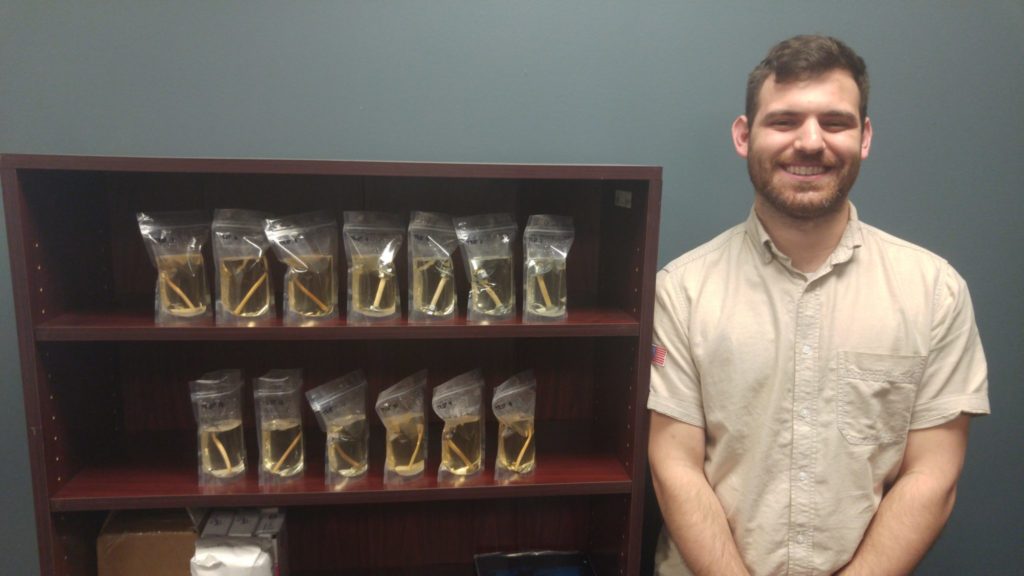This is a guest post from Cody Burgey, a Mechanical Engineer at NanoRacks, who has led the efforts to test the Xtronaut Crystal Growth in Space kits. This includes both the kit bound for the International Space Station (ISS), as well as the near-identical kit that you can purchase for your home or classroom! Join our Kickstarter campaign to reserve your Crystal Growth in Space kit, and access cutting-edge microgravity research.

The one good museum in my small hometown was a space museum. It wasn’t a singular point in my life where I became enamored in outer space, but a slow constant burn. Schools constantly used the museum for field trips so becoming exposed and interested in space was inevitable. Space had always been displayed as an awe-inspiring other world and—thanks to the lack of numerous lights in my town— it was easy to see the beauty of the night sky and yearn to be a part of it. Currently, I am a Mechanical Engineer at NanoRacks. NanoRacks helps researchers send science into space, and I will design anything necessary to facilitate that. I have had a hand in designing satellite deployers, on-station biological testing sites, experiment plug-and-play platforms, and in this specific case, researching chemistry for an experiment to grow crystals in space.
Designing for space requires a very exhaustive approach. It’s often expensive, difficult, and rare to get something into space, so the utmost attention to detail is critical. Microgravity is near impossible to replicate on Earth, making testing even more difficult. Luckily, for the Crystal Growth Kit, the purpose of the experiment is to see what effect microgravity has on the crystal growth. My design goal was to create the best crystals I could on Earth using only the resources and setup that would be allowed on the ISS. Crystal growth in this case requires a super saturated liquid and I had to navigate how to create one with limited heat, in a closed environment, and with uncertain parameters. It was fun to pretend to be an astronaut while running our ground experiments. One of the best experiences about science is the scientific process itself. Making hypotheses about the experiment, running the experiment, and then playing detective to find out how and why things did or did not go as expected brings a certain thrill to discovery. For example, we were surprised to find that the dowel rod, that we previously saw sink in water, started floating when we mixed in all the sugar. What we thought was a very easy hypothesis, “the dowel will sink,” returned some surprise detective work. Turns out that our dowel rod assembly was just barely more dense than standard water. However, when a lot of sugar is mixed in the water, the sucrose solution I created became more dense than the dowel rod assembly, thus causing it to float. Of course in space there will be no “floating” (because everything is floating on the ISS!), but it shows how everything needs to be well thought out to run a successful mission and return usable results.
This will be the first project I’ve worked on that will be directly used by children. I hope kids enjoy creating their own crystals at home alongside the astronauts’ space crystals on the ISS. It’s very exciting for me to try and foster a desire to understand science and engage in its mysteries. Specifically, I want kids to see outer space as something that can be reached and something that should be explored more thoroughly. The careers associated with space are exciting and rewarding and the more interest there is, the better for all of us. It is my belief that anyone can become an engineer, scientist, or even an astronaut, and participating in a little crystal research is a pretty good first step.
